The Twenty-first Sunday after Pentecost 2024
Encountering a miraculous myrrh-streaming icon
Forgive me in advance. I’m going to start this sermon with a pop culture reference, by quoting a film entitled Star Wars Episode VII: The Force Awakens.
The protagonist of the film, a young woman called Rey, meets her childhood hero Han Solo, and when he begins to talk about the Jedi and the mystical Force, her eyes widen. ‘The Jedi were real?’ she asks in amazement.
‘I used to wonder that myself,’ Han replies. ‘Thought it was a bunch of mumbo-jumbo. Crazy thing is, it’s true. The Force, the Jedi, all of it. It’s all true.’
This Wednesday, Subdeacon Christopher and I had an experience which left us both feeling like Rey in that scene. In fact, at one point, Chris turned to me and said with a winking smile, ‘It’s all true!’ I knew what film he was referring to.
We’d travelled by car down to Lincoln to venerate the miracle-working Iveron icon of Hawaii. Until last Sunday, when, after the Liturgy, Fr Michael announced that it was going to Lincoln, I’d never heard of the miracle-working Iveron icon of Hawaii. I had heard of the miracle-working Iveron icon of Iveron, the monastery on Mount Athos, but never of the copy in Hawaii.
In fact, many, many years ago, I was blessed to visit the Monastery of Iveron, where I venerated the icon, which they call the Panagia Portaïtissa, ‘Our All-Holy Lady the Keeper of the Gate’.
The story of the icon is fascinating — and very old. It stretches all the way back to the very beginning of the Church.
The Evangelist Luke was a great Apostle, one of the two to whom the resurrected Lord appeared on the road to Emmaus, whose heart burned as Christ opened the Scriptures to him. But St Luke was not only an Apostle. He was also a doctor, and a painter. In fact, he was the very first iconographer. The most treasured of all his icons was the one known as the Hodegetria — ‘the One Who Shows the Way’.
In it, the Virgin was rather unusually depicted standing full-length. Cradling the Christ Child in her left arm, she gestures toward him with her right, all the while staring pointedly at us, forcefully revealing that the One born from her is the Truth toward which all creation ultimately inclines. In her spiritual and bodily purity, and in her total obedience, the Blessed Virgin truly does reveal the Way to the Lord.
In the year AD 438, the Empress St Eudocia went on pilgrimage to Jerusalem and when she returned to Constantinople, she brought back the Hodegetria icon with her, which she acquired in Antioch on her way. The icon was placed inside the monastery that her sister-in-law St Pulcheria built to the east of the Great Church of Hagia Sophia.
Over the next ten centuries, the icon worked countless miracles. It became known especially for its power to restore sight to the blind. Sadly however, the original was lost at the Fall of Constantinople in AD 1453. No one knows what happened to it.
Iconographers both East and West copied the Hodegetria, and the Iveron icon of the Panagia Portaïtissa is one of those copies. It was first written in the city of Nicaea, across the Bosphorus from Constantinople, sometime before Iconoclasm — and yes, we say that icons are written, not painted, hence iconography, ‘icon writing’. When Iconoclasm broke out, a pious widow did her best to shield the icon from destruction, but soldiers of the iconoclast emperor Theophilus tracked it down and, in their wickedness, stabbed the icon. To their horror, however, blood began to stream from the Virgin’s cheek, where they had stabbed it, and while they were overcome with fear and amazement, the widow grabbed the icon and, determined never to let it fall into the hands of the iconoclasts, cast it into the sea.
Around two hundred years later, around the year 1000, a light appeared off the coast of Mount Athos, not far from the monastery of Iveron. At that time, the monastery was still home primarily to monks from Georgia, hence its name Iveron, from the ancient name for Georgia: Ἰβηρία, Iberia.
Noticing the light, a group of monks hopped into a boat and rowed out to see what it was. As they drew near, they discovered that the source of the light was a mystic pillar of fire rising out of the water. Drawing even closer, they saw that at the base of the pillar floated an icon of the Mother & Child — and that, on the right cheek of the Virgin’s face, there was a scar. Overcome, they were eager to venerate the icon. But every time they rowed up to it, it withdrew and retreated back into the sea. Finally giving up, the men rowed back and told their fellow monks what they had seen.
The whole brotherhood began to pray. They prayed for three days without ceasing — when suddenly, in a vision, the Theotokos appeared to an elderly monk, St Gabriel the Iberian. He was the only man worthy to retrieve her icon from the sea, she told him. He obeyed. The whole brotherhood followed him down to the shore where, to their amazement, he stepped onto the water as if onto dry land and walked off across the waves. After a short while he returned, carrying the Panagia Portaïtissa in his arms.
Conveying the icon reverently to the church, St Gabriel placed it on the altar. But the next day, when the monks arrived for prayer, the icon had vanished. Looking around, they found it hanging beside the monastery gate. They took it down and returned it to the altar. But the next day it had returned to its spot beside the gate. That’s when, in another vision, the Theotokos told St Gabriel that the Portaïtissa was meant to remain there. ‘I do not want my icon to be guarded by the monks,’ she said. ‘Rather, it will guard them.’ So they built a small chapel beside the gate to house the icon, where it remains to this day: truly the Portaïtissa, ‘Our Lady the Keeper of the Gate’.
Many copies of the Iveron icon were made. In Moscow, a copy was placed in the Iversky Chapel beside the Resurrection Gate that led into the Kremlin. Everyone would venerate it before passing through the gate. Tragically, the Bolsheviks destroyed the chapel in 1917 and the icon disappeared; it has never been found.
Then in 1982, inside a church in Montreal, a copy of the Iveron icon miraculously began to stream myrrh. It continuously streamed myrrh for fifteen years, until 1997, when its caretaker, a monk called José Muñoz Cortés, who had brought the icon to Athens to be venerated by the faithful there, was tortured and killed inside his hotel room. The icon was stolen, never to be recovered.
However, ten years later, in 2007, a pious couple in Honolulu, Hawaii started to smell a wondrously sweet scent emanating from somewhere near the icon corner in their home. Investigating, they discovered that their mounted-print copy of the Montreal Portaïtissa, which the husband had been given as a name day gift, was streaming myrrh. They took the icon to their local parish priest who placed it on an analogion in the centre of their parish church. The icon streamed and streamed; the fragrance was of rose-like sweetness. Ever since, for the past seventeen years, the icon has been on the move, going from parish to parish, filling the hearts of the faithful with the palpable presence of the grace of God.
And on Wednesday evening, the miracle-working Iveron icon of Hawaii arrived in Lincoln.
Now, full disclosure: I have never been a credulous sort of person. I like to think my faith is strong and my piety sincere, but tales of miracles and of miracle-working icons have always prompted a vein of scepticism in me. How can I know for sure that such stories are true? For this reason, it took me a long time fully to embrace the cult of the saints, and only relatively recently have I begun to venerate holy relics not simply in a spirit of obedience, but in a spirit of true faith. So, though I went down to Lincoln with an open mind, I was not at all sure what to think about the idea of a miracle-working, myrrh-streaming icon — and one from Hawaii of all places! Perhaps like me, you struggle with this dimension of our Orthodox faith. I think a lot of people do.
About 150 worshippers had gathered to venerate the icon. Our own Metropolitan Silouan was also there — he asked me to send his love to his flock in York— and presided over a service of Great Vespers. Then the icon arrived, transported by two priests from London who drove it to Lincoln along with Fr Nectarios, the American man who discovered the icon and who then was tasked by his archbishop to look after it on its journeys round the world.
Metropolitan Silouan received the icon at the doors of the church, where it was censed. As the clergy carried it inside in solemn procession, over and over the choir chanted the troparion of the Portaïtissa in tone 1:
The audacity of the impious who hate the image of the Lord came godlessly to Nicaea in their strength and inhumanly interrogated the widow who piously venerated the icon of the Mother of God; but at night, she and her son cast the icon into the sea, crying out: ‘Glory to you, O pure one, for the trackless sea has given you its breast! Glory to your straight journey, O you who alone are incorrupt!’
The faithful queued to venerate the icon and to be anointed by the myrrh which was well and truly streaming from it. When I finally reached the head of the queue, there she was, looking very much like the Portaïtissa which I once venerated on Mount Athos, only smaller; and there she was, covered in myrrh, droplets of which could be clearly seen. Archimandrite Philip anointed me with it and indeed it smelled like roses. The whole church soon filled with the scent.
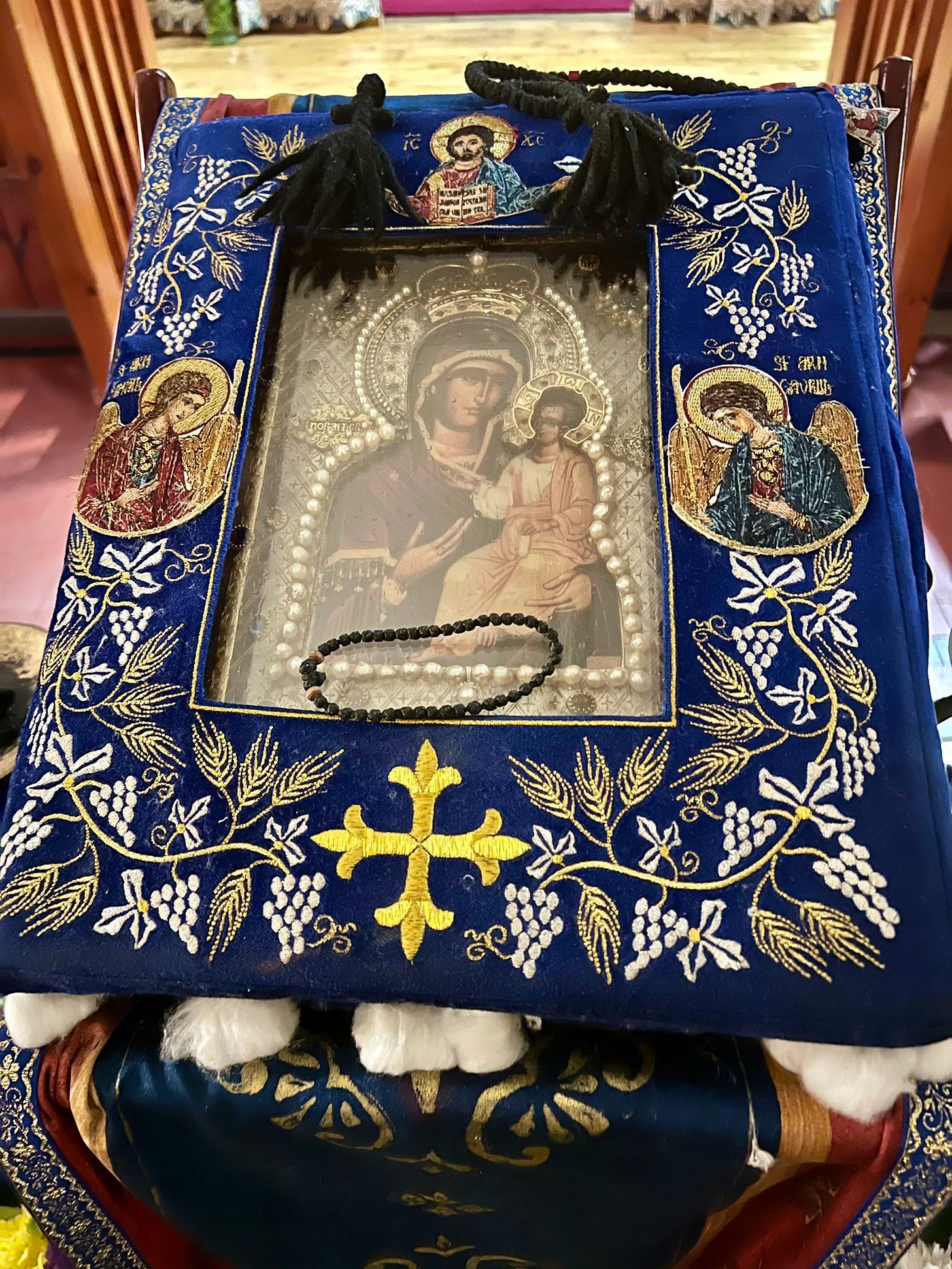
It was a really overwhelming experience. What can I say, my friends? It is as Subdeacon Christopher said when he turned to me smiling and, with joy in his eyes, quoted that film: ‘It’s all true.’
A small group decided to stay all night and keep vigil beside the icon. Since I had nowhere to be the next morning, I decided to join them. Every two hours or so, Fr Philip would serve an Akathist, but apart from that, we sat in prayerful silence.
At one point, overcome by tiredness, I went into Fr Philip’s office for a nap. Later on I was told that, while I was out of the room, the icon had suddenly begun to stream myrrh really copiously. Just my luck, I wasn’t there to see it. Like my namesake St Thomas, when the real miracle occurred, I wasn’t in the room.
Well, as our Lord told St Thomas later after appearing to him in the flesh: ‘You have seen and believed. Blessed are those who have not seen and believed.’
Earlier that night, after everyone had venerated, Metropolitan Silouan gave a brief sermon. In his usual way, he spoke directly from the heart. ‘We have received a very big blessing tonight,’ he said. ‘Look at my hand! My left hand that was holding the icon is wet! Covered in myrrh! God has changed the material of the icon into myrrh for us. A huge blessing! But the real question is: will you now change your life? Change your life into a life of holiness and love! That is the real miracle!’
Yes indeed. The transformative power of our faith in Christ is indeed the real miracle. As St Paul said in today’s Epistle reading: ‘We have believed in Christ Jesus so that we may be made righteous by the faith of Christ... I no longer live, but Christ lives in me, and that which I now live in the flesh, I live in the faith of the Son of God, who loved me and gave himself for me.’
Let our faith, then, be galvanised by all the palpable signs of God’s omnipresent love, signs like the one I witnessed on Wednesday which I have honestly recounted to you; and even more, signs like the ones we are given to contemplate in the Holy Liturgy and in all the material means the Church gives us to help us in our path to salvation. And let us live out that faith in truth, sacrificing ourselves in love in imitation of the Saviour and in imitation of all the faithful who have preceded us along the way: men like St Gabriel, and before him that pious widow, and before her St Eudocia, back to St Luke himself, and even further back, to all the righteous ones who were granted the gift of faith in Christ.
For, my dear friends, everything handed down to us — everything we have been entrusted, absolutely everything! — is very true indeed.





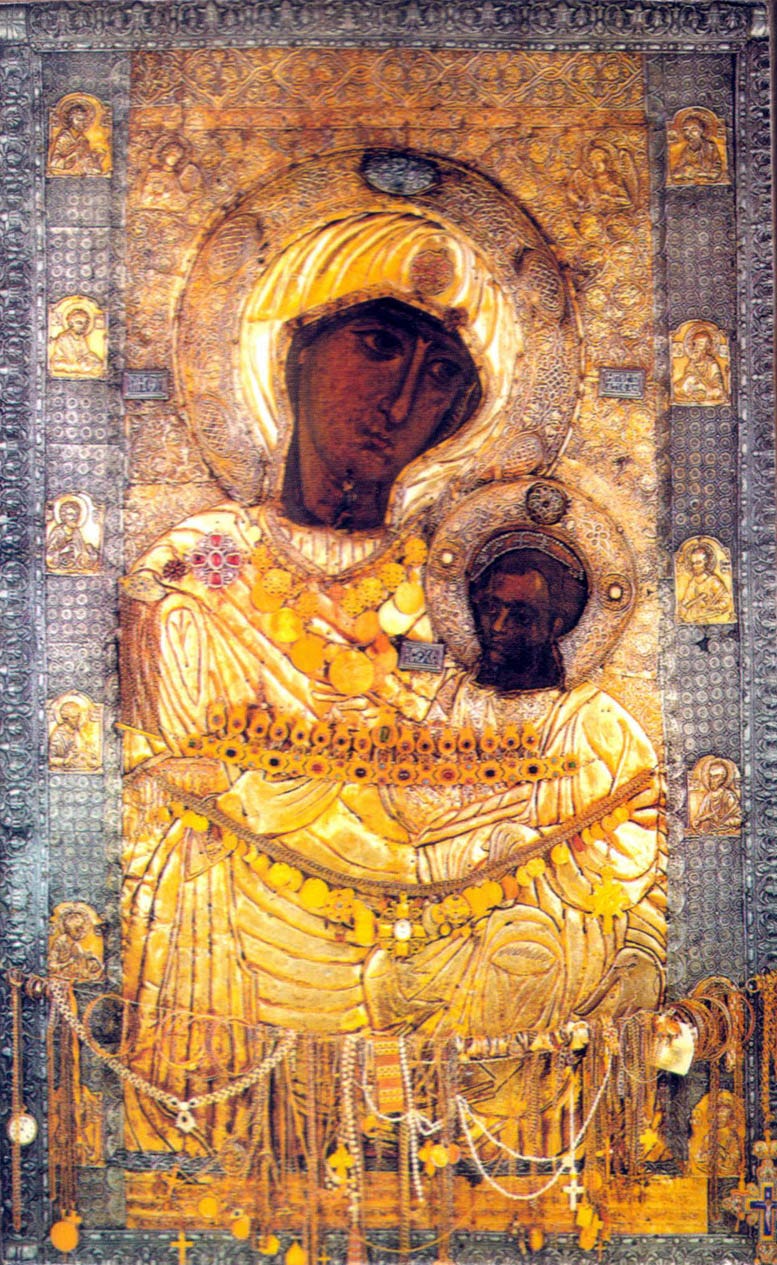

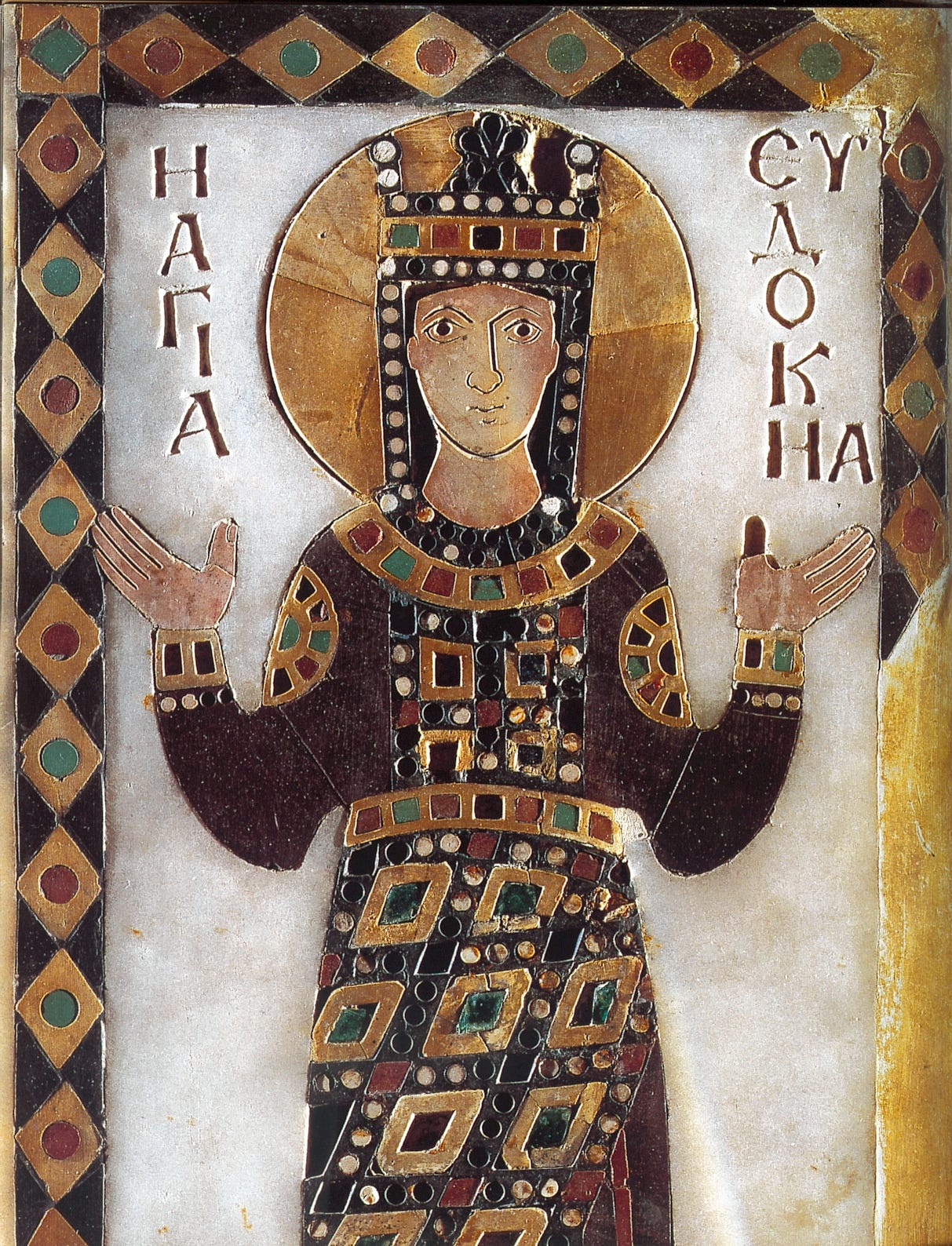
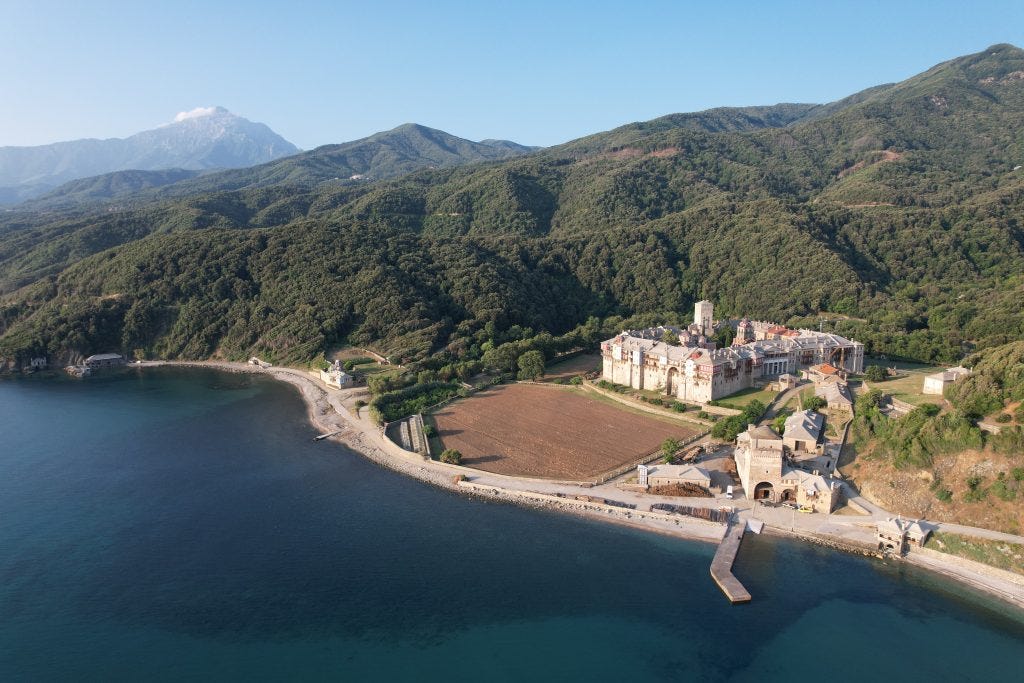
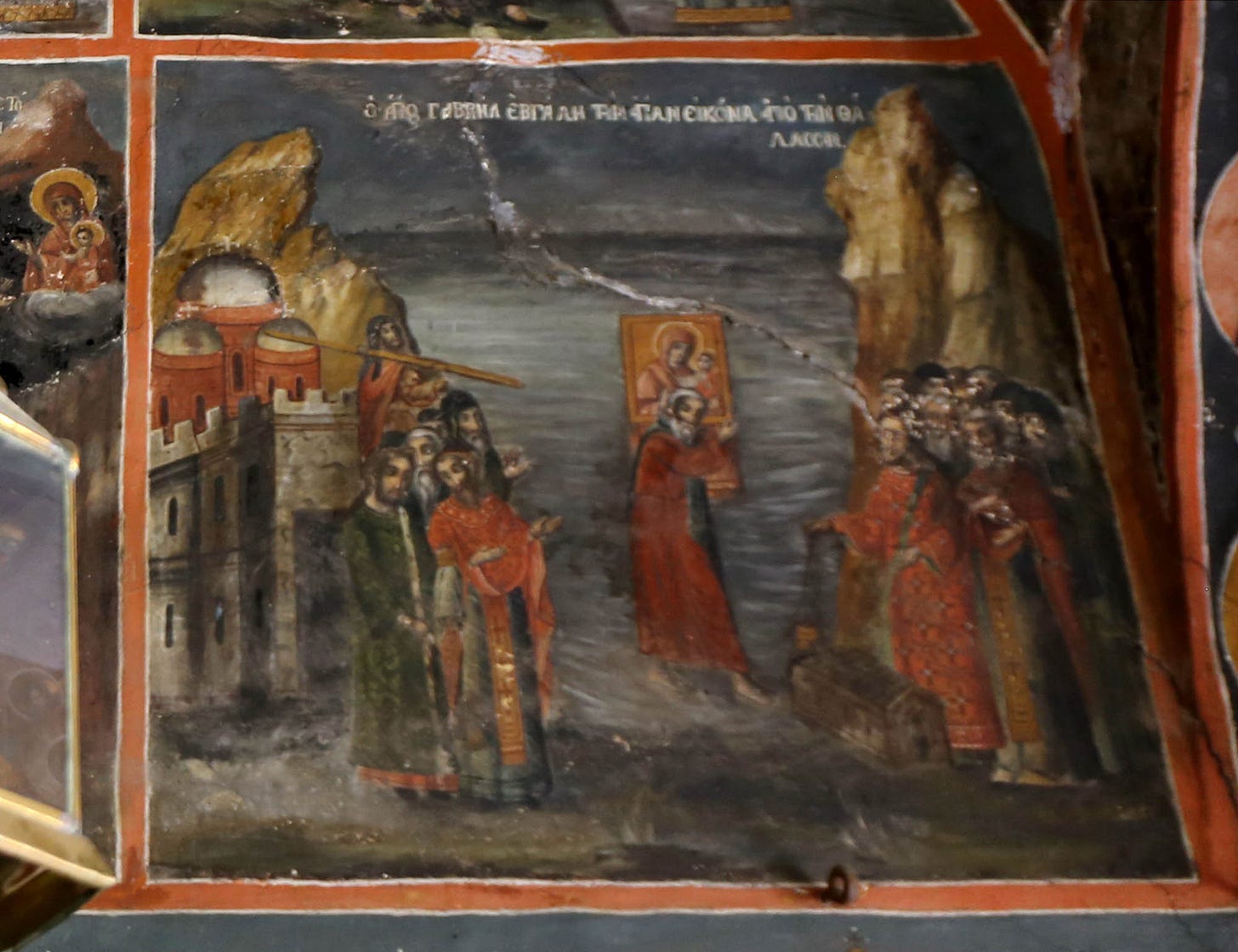
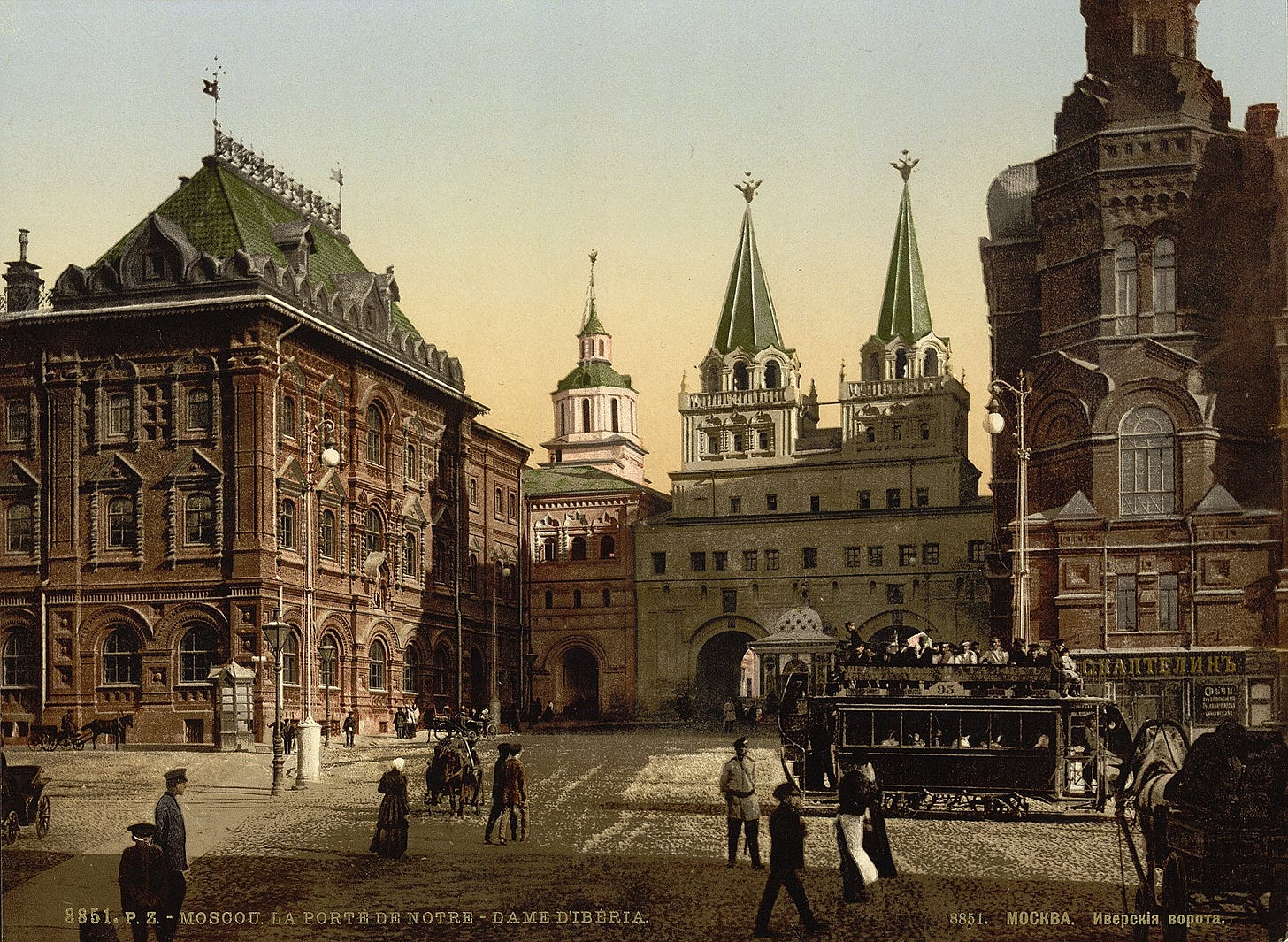
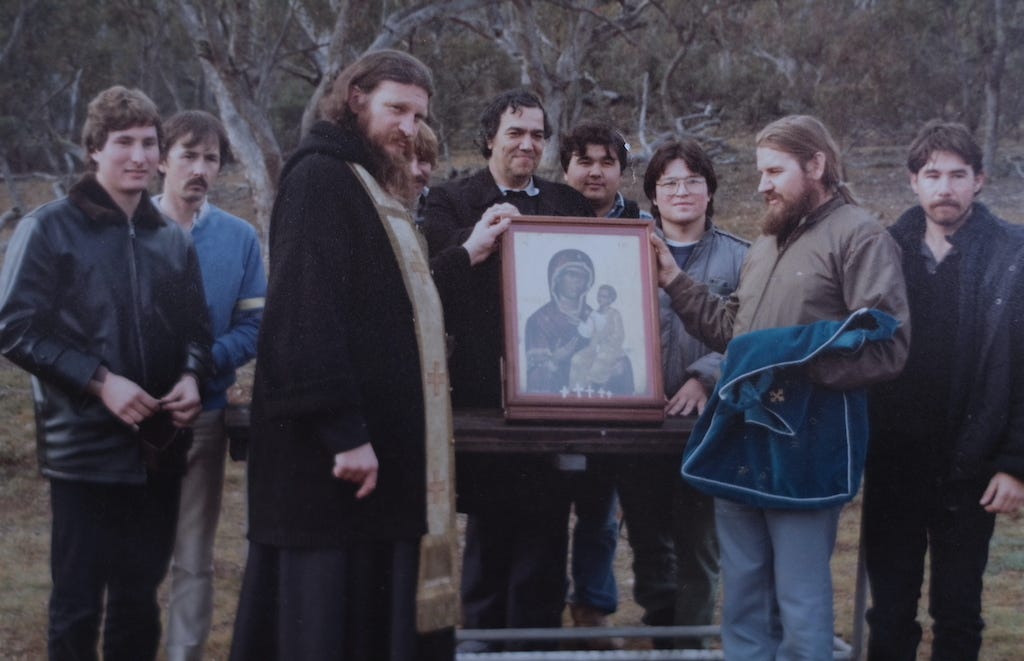
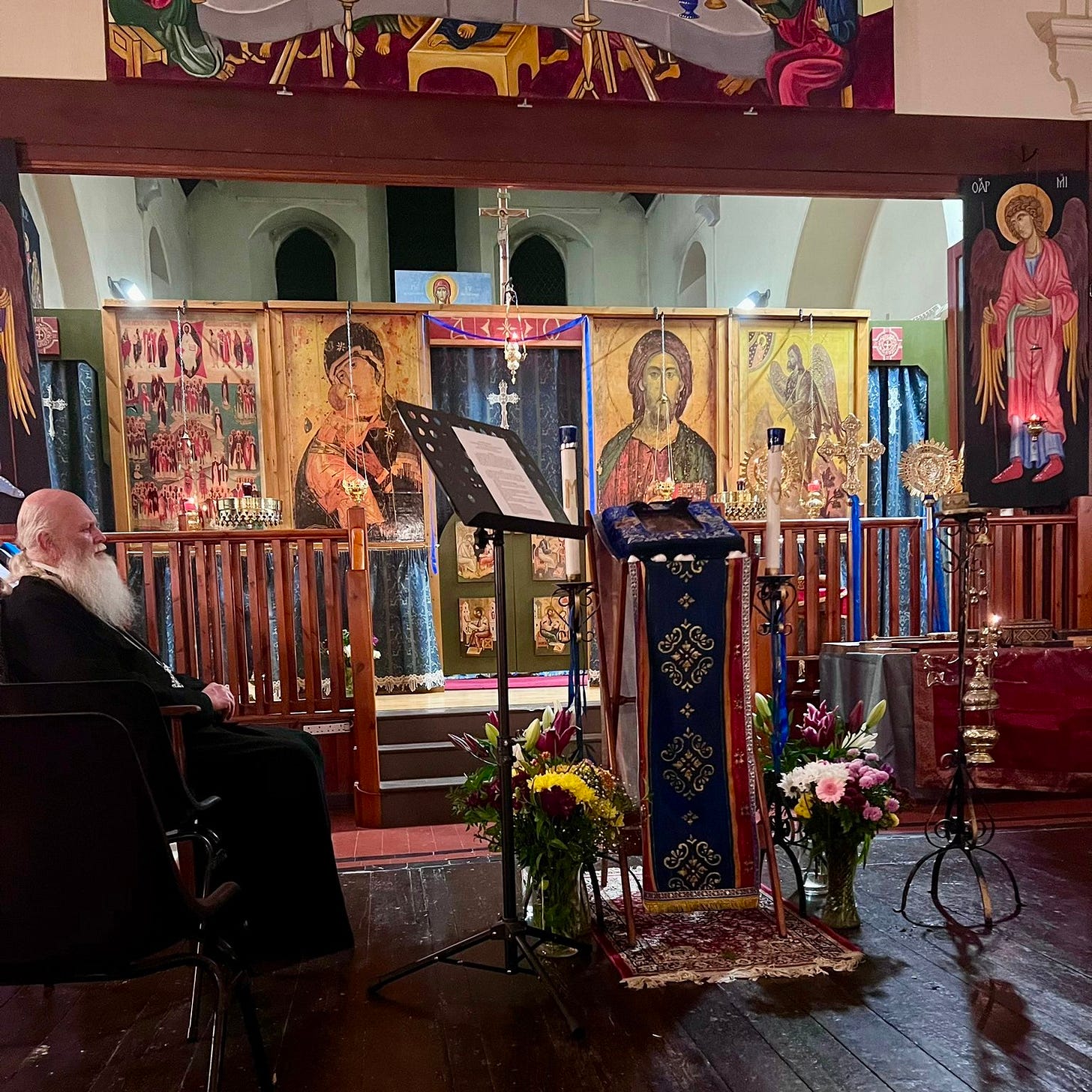
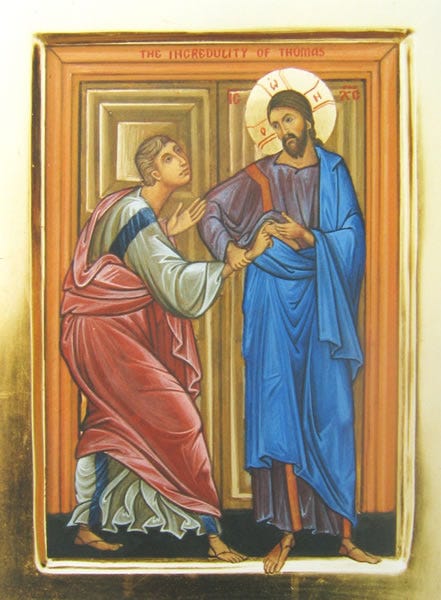
It's appropriate in our physical world that the only salve to skepticism is an actual miracle. Logicians quake at the concept, but transcendence knows no bounds. Hmm. That's an awesome pun.